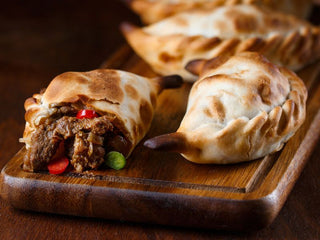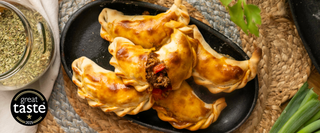How to set up a TWO-ZONE COOKING on your BBQ
SHARING IS CARING
I’ve been BBQing for nearly 35 years now, sometimes as a hobby, sometimes professionally, across Argentina, South America, North America, parts of Europe, and mostly here in the UK. Throughout that time, one thing has remained constant: my passion for BBQ. It’s more than just a way of cooking, it’s a way of connecting.
With people, with flavours, with traditions that stretch far beyond the grill.
There’s something deeply human about gathering around fire, sharing food made slowly and with care. It teaches you patience, it brings people together, and it never stops giving. That’s what this blog is all about, not just recipes or techniques (though you’ll find plenty of those), but real value, honest lessons, and the kind of experience that only time, smoke, and a lot of meat can give you.
So whether you’re a seasoned pitmaster or just firing up your first grill, I hope you’ll find something here that inspires you, from our hearts at Casa Argentina, to your fire at home.
TWO-ZONE COOKING
Our go-to technique at Casa Argentina for setting up a BBQ is to have two cooking zones. You can cook pretty much everything this way. Set it up so you have one zone directly over the coals for searing, and another cooler zone, away from the coals, to allow the meat to cook through indirectly.
With a charcoal grill, just pile up your coals on one side, leaving the other side clear. Use more coal and open the vents to increase the airflow to cook at higher temperatures.
Clamp the airflow down and close the lid (if your BBQ has one) to reduce the temperature for a slow, controlled, indirect burn.
INDIRECT COOKING
To cook indirectly, set up your BBQ for two-zone cooking, as above, then use only the cooler side of the grill, away from the hot coals. If you have a lid, keep it closed as much as possible during cooking. This way, the heat circulates to cook the food evenly.
SMOKING
Smoking is the ultimate in low ’n’ slow. It is always indirect cooking at a low temperature. Ideally, you’ll do this in a dedicated smoker built for the purpose, which will be able to smoke for a long time without the need for replenishing the coals too often. In the absence of a purpose-built smoker, you can smoke in pretty much any BBQ with a lid.

Smoking on a gas BBQ
Well, yes, technically you can. But at Casa Argentina, we’d prefer it if you didn’t, you’ll miss out on half the fun and half the flavour.
PLAY WITH SMOKE
Smoke is a seasoning, so learn to add subtle smoke flavour to your food. Everything in balance, though, you want to be able to taste the rub, the sauce, the meat and the smoke all in perfect harmony. You’ll get a background smoke flavour from using decent, natural lump wood charcoal. Then, use wood chunks to add that extra-special layer on top.
Wood chunks between the size of a golf and tennis ball are best. Don’t bother soaking them first, just throw them straight onto the coals just before you add the meat, and they’ll smoulder away for ages.
Wood chips tend to burn up too quickly directly on coals, but if you have a gas BBQ, wrapping some up in a couple of layers of thick foil and piercing it a few times, before throwing the parcel onto the grill over the burners works well.

LEARN TO GIVE A DAMN GOOD RUB
BBQ is all about building up layers of flavour, so the resulting mouthfuls of meat knock your socks off. A BBQ rub is probably the most important part of this, it’s where the main flavour profile comes from. It’s the foundation for the whole recipe that ties the flavours of the meat, the sauce and the wood smoke together. It’s also the base of that wonderful dark bark that builds up on the meat during cooking. That’s the heavily seasoned, smoky, chewy exterior that everyone wants a bit of in their sandwich.
At Casa Argentina, we believe a good rub is key. Rubs should be balanced and offer some heat, some sweetness, and a good, rounded background seasoning.
Apply your rub to the surface of the meat, then pat it down or massage it in. Don’t aim for a thick coating like breadcrumbing, a rub forms a thin, uniform, consistent and even layer.
Generally, the larger the cut of meat, the further ahead you can rub. So, you can rub your ribs up to about six hours in advance (any more and the meat starts to cure and you’ll get a strange ham-like flavour). Pork shoulders or briskets, on the other hand, can cope with a good overnight rest bathed in rub.
SLOW THINGS DOWN, RELAX…
True BBQ takes time and patience. The meat is done when it’s done, don’t try to rush things. Accept that this is a slow process and allow yourself to enjoy it. Find yourself a comfy chair and position it near your smoker. Fill a bucket with ice and a few beers, turn on some tunes and spend the afternoon keeping your meat company and soaking in this smoky journey of love.
If anyone tries to get you to do something else, you can’t help, you’re busy cooking.
DON’T FIDDLE AND POKE
And definitely don’t squeeze. Once you’ve put the meat on the grill, just leave it. You should turn the meat only once or twice throughout grilling. Squashing burgers and steaks down on the grill just squeezes out all the lovely juices and causes flare-ups.

CHECK FOR DONENESS
Overcooking is as sinful as undercooking. Invest in a good instant-read thermometer so you know the exact temperature of your meat, it takes away the guesswork.
Thermometer in hand, you’ll always know when the chicken is cooked through and you’ll be able to serve up the perfect medium-rare steak.
It’s impossible to give accurate cooking times for true low ’n’ slow BBQ. There are so many variables in play, the heat of your fire, the ambient air temperature, the size and fat content of the joint of meat, the distance of the meat from the coals you’re cooking on, and so on. It’s also impossible to give specific cooking temperatures, your BBQ cooks differently from your neighbour’s and many BBQs don’t have an accurate temperature gauge (or one at all).
The little guide below will give you an indication of what we mean by low, medium and high grill heat, but it’s by no means fool proof. In good time, you’ll get to know the way your BBQ cooks.
Instead, aim for specific internal temperatures (We give these in each of the Casa Argentina recipes), this will make sure your pork pulls properly and your ribs have that perfect bite to them. Follow the basic rules of how to set up your cooker for the different styles and then let the meat tell you when it’s done.
DON’T GET SAUCY UNTIL THE END
BBQ sauces and glazes have a high sugar content that will burn very quickly and go bitter if left cooking for too long. Cook your meat through, then glaze or sauce towards the end of cooking and allow the meat to go sticky over a gentler, indirect heat.

BE A MEAT WHISPERER
True BBQ is not about exact recipes, timings or precise cooking temperatures. Anyone can mix up a rub or buy a bottle of sauce, and, more importantly, we’re cooking with live fire here. It’s not like switching on your oven. Understand your kit and the basic cooking techniques, then watch, feel, smell, taste and listen carefully to your meat. It tells you what adjustments it needs and when it’s done.

RESTING TIME - THE MOST IMPORTANT BIT
Once your meat has finished cooking, one of the most overlooked yet crucial steps is letting it rest, and this is where butcher’s paper comes into play.
Wrapping the meat in butcher’s paper helps retain moisture while allowing just enough breathability to prevent it from going soggy. During the resting period, the juices that were driven to the surface during cooking slowly redistribute throughout the cut, resulting in a more tender, flavourful bite.
Whether you’ve smoked a brisket or grilled a juicy steak, giving your meat that well-deserved rest makes all the difference, it’s the final touch that separates a good BBQ from a truly unforgettable one.
The Magic Number? 10 minutes of resting time is the way-to-go.
DON’T COOK IN FLIP-FLOPS
Trust us on that, at Casa Argentina, we’ve learned it the hard way many times over.
GRILLING TEMPERATURES
If your BBQ has a temperature gauge, these are the rough target temps to aim for:
Low ’n’ slow/smoking: around 110–120°C
Medium: around 150–180°C
High: around 200–250°C

 0208 540 1222
0208 540 1222


